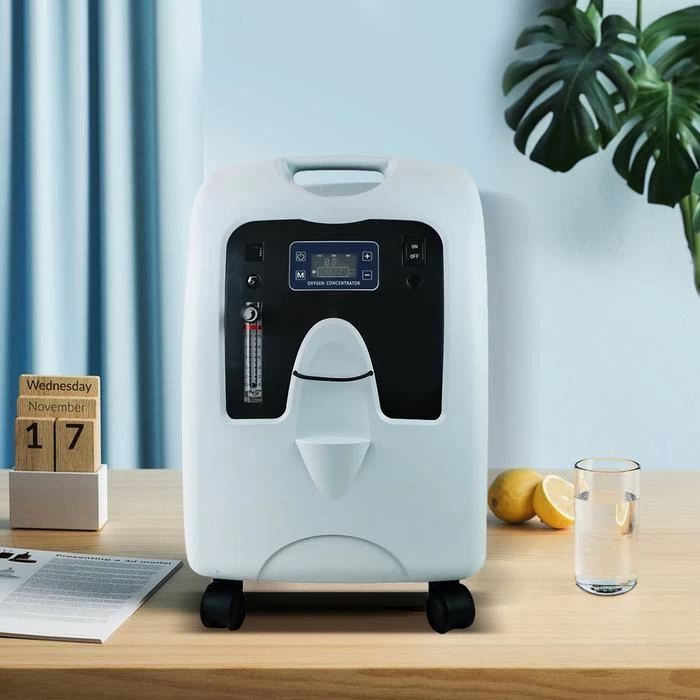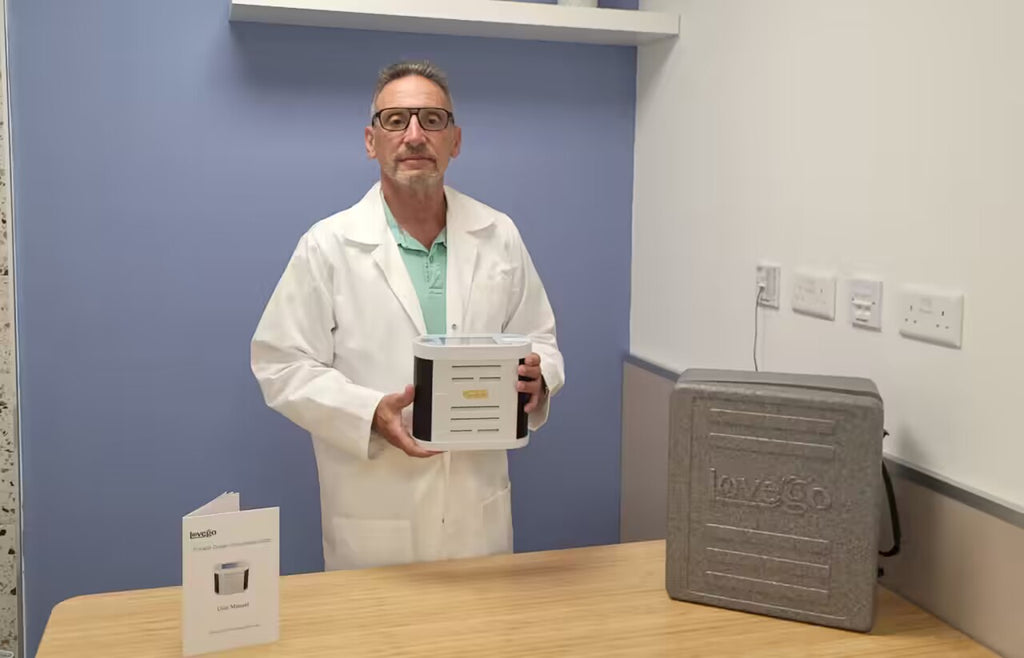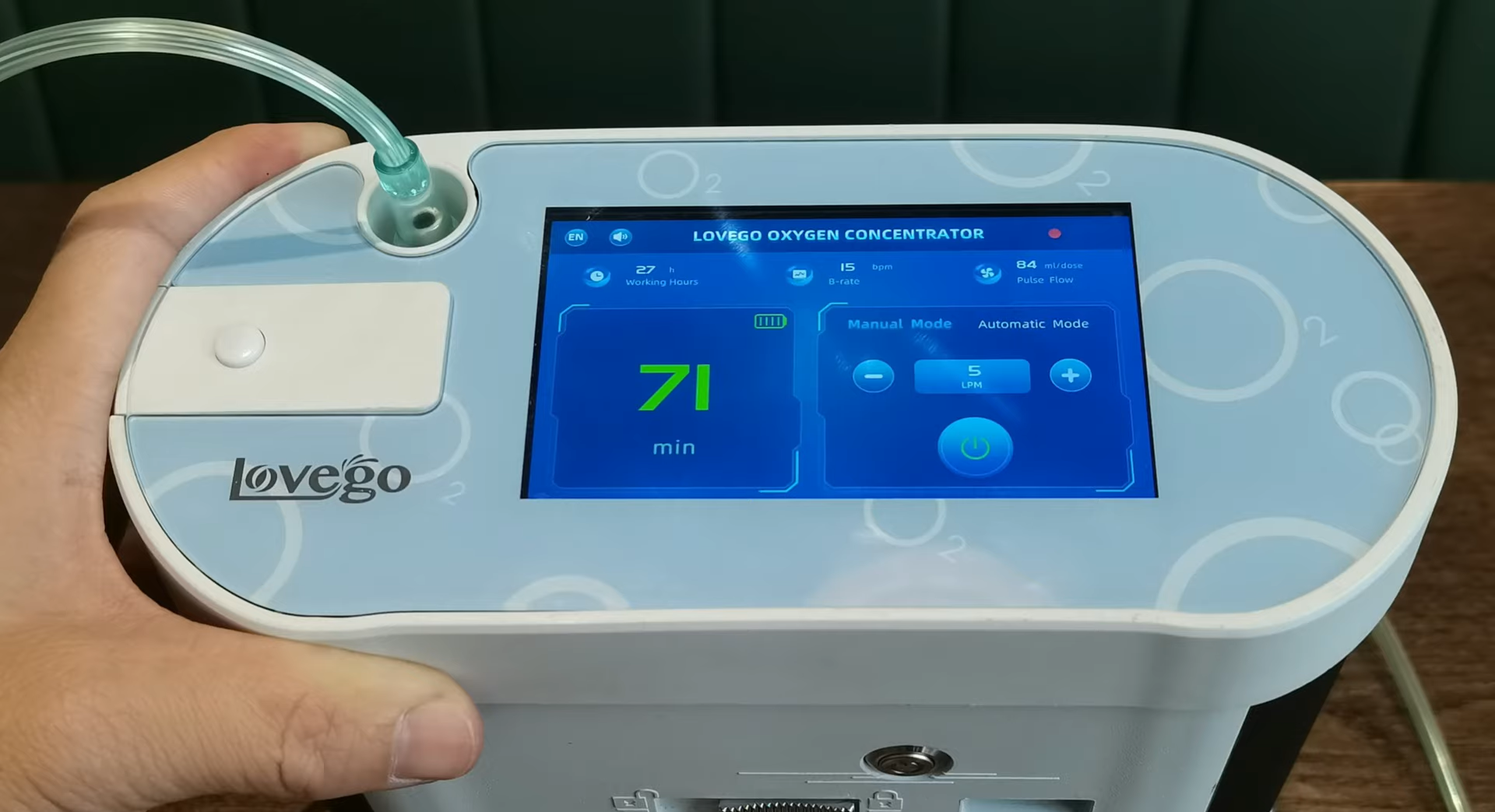Choosing the right oxygen concentrator can be a key step for those who rely on supplemental oxygen. In this article, we'll break down the differences between portable and home oxygen concentrators to help you make an informed decision. Whether you need the flexibility of a portable device or the continuous power of a home unit, we're here to guide you through the details. Our goal is to simplify your options and support you in finding the oxygen concentrator that best fits into your life and meets your health needs.
Quick Comparison Sheet
|
Aspect |
Home Oxygen Concentrator |
Portable Oxygen Concentrator |
|
Size & Weight |
Large and heavy; weights range from 30 to 50 lbs or more. |
Small and lightweight; typically 3 to 15 lbs, making it easy to carry around. |
|
Mobility |
Limited; best for use in one place. |
High; can be taken almost anywhere. |
|
Oxygen Flow |
Higher flow rates possible, usually up to 5-10 liters per minute. |
Lower flow rates; some models offer up to 7 liters per minute. |
|
Battery Use |
Plugs into a wall outlet; no battery. |
Battery-powered; needs recharging. |
|
Travel-Friendly |
Not suitable for travel. |
Often approved for airline travel. |
|
Cost Over Time |
Generally cheaper in the long run. |
May be more expensive due to batteries and portability features. |
|
Noise Level |
Can be louder due to larger size. |
Tends to be quieter, but still produces some sound as part of normal operation. |
|
Daily Use |
Best for those who need constant oxygen at home. |
Ideal for active users out during the day. |
|
Maintenance |
Regular cleaning required; less frequent service. |
May need more regular maintenance due to portability and exposure to different environments. |
|
Oxygen Delivery Method |
Primarily continuous flow, delivering a steady stream of oxygen. |
Pulse dose and/or continuous flow in some advanced models. |
|
Travel-Friendly |
Not intended for travel due to size and power requirements. |
Many models FAA-approved for air travel; great for trips and outings. |
Home Oxygen Concentrators: The Foundation of In-Home Oxygen Therapy
Home oxygen concentrators are stalwarts of in-home oxygen therapy, built to deliver a dependable and continuous flow of oxygen. Larger and sturdier than portable models, they operate by drawing in ambient air, removing nitrogen, and delivering purified oxygen directly to the user through a stationary setup.
- Size and Power Requirements: Designed to be a fixture in your home, these units can weigh over 30 pounds, offering a trade-off between portability and robust functionality. They require a stable power source, as they must be plugged into an electrical outlet to function, making them less suitable for travel but ideal for uninterrupted home use.
- Advantages of Stability and Flow: A primary benefit of home concentrators is their ability to provide a continuous flow of oxygen, which is essential for patients with higher oxygen demands. With flow rates that can reach up to 10 liters per minute, these machines are equipped to support those with intensive oxygen needs.
- Cost-Effectiveness for Long-Term Use: While the upfront cost may be significant, home oxygen concentrators are often more economical for long-term treatment. They avoid the need for regular replacements and have lower recurring costs compared to options like oxygen tanks or liquid oxygen systems.
- Considering Mobility and Dependability: The main drawback is mobility; these units are not designed to be moved frequently. However, for individuals who spend most of their time at home, this isn't usually a concern. To counteract power outages, users may keep a backup battery or generator, ensuring an uninterrupted oxygen supply.
- Maintenance Needs: Home oxygen concentrators do require some upkeep, including routine cleaning of air filters and occasional professional servicing. Despite this, they're known for durability and generally demand less frequent maintenance than their portable counterparts.

Portable Oxygen Concentrators: On-the-Go Oxygen Solutions
Portable oxygen concentrators are the epitome of flexibility for individuals requiring supplemental oxygen. Their compact size and light weight make them ideal for active users who don't want to be tethered to a large machine at home. These devices are small enough to carry around, often in a bag or with a dedicated cart, providing oxygen therapy while you're out and about.
- Battery Operation for Freedom of Movement: One of the most significant benefits of portable oxygen concentrators is their battery-powered operation. This feature liberates users from being plugged into a power outlet, allowing for greater freedom. Most units offer a variety of battery options to suit different lifestyles, with some able to run for several hours on a single charge-perfect for errands, social outings, or travel.
- Advantages for an Active Lifestyle: The primary advantage of portable oxygen concentrators is the mobility they afford. They empower users to maintain an active lifestyle without compromising their oxygen therapy needs. Additionally, many models are approved by the Federal Aviation Administration (FAA) for use on airplanes, making travel more accessible for those who require oxygen while flying.
- Integrated Technology for Customized Delivery: In addition to continuous flow, modern portable oxygen concentrators come equipped with advanced settings like pulse-dose delivery, which supplies oxygen based on your breathing rate. This technology optimizes oxygen consumption and extends battery life, ensuring that you get the right amount of oxygen when you need it.
- Balancing Performance with Portability: Despite their convenience, portable concentrators do have limitations. They typically offer a lower maximum oxygen output than home units and may not be suitable for those with high-flow oxygen requirements. The need to manage battery life also adds an element of planning to daily activities, as users must ensure they have enough charge for their needs or access to charging facilities.
- Cost Considerations and Insurance: When considering a portable oxygen concentrator, it's essential to factor in the cost. While they generally come at a higher initial investment, especially for units with longer battery life and greater oxygen output, insurance coverage may offset some of these expenses. It's important to consult with your insurance provider to understand what costs will be covered.

Comparing Features Side-by-Side: Home vs. Portable Oxygen Concentrators
Flow Rate and Oxygen Delivery Methods
When it comes to oxygen delivery, the choice between home and portable concentrators hinges on your required flow rate. Home units typically offer higher flow rates-up to 10 liters per minute-suitable for individuals with more severe respiratory conditions that necessitate a continuous, high volume of oxygen. On the other hand, portable models are generally equipped for lower flow rates and often employ pulse-dose technology, which delivers oxygen in bursts timed to coincide with the user's inhalation, making them more efficient for those with moderate oxygen needs.
Weight and Portability Trade-Offs
The portability of an oxygen concentrator is directly related to its weight, a vital consideration for users who travel or prefer an active lifestyle. Home concentrators are heavy and intended for stationary use, while portable ones are designed to be carried around, with some weighing as little as five pounds. However, there's a balance to strike between the weight of a device and its battery life or oxygen output; lighter units may have shorter battery longevity or lower oxygen capacity.
Operational Sound Levels and Maintenance Requirements
Noise level can be an important factor, especially if the concentrator will be used during sleep. Home units, being larger, might produce more sound compared to portable units, though this varies by model. As for maintenance, both types require regular cleaning, usually of filters and exterior surfaces. Portable concentrators may need more frequent upkeep due to their exposure to various environments outside the home.
Extended Reading: How to Stop Annoying Beeping Noises from Your Portable Oxygen Concentrator
Cost Analysis: Upfront Investment and Ongoing Expenses
Home oxygen concentrators typically involve a lower initial cost and can be more economical over time, particularly for users requiring round-the-clock oxygen. Conversely, portable units, while offering greater freedom, come with a higher price tag, factoring in the technology for mobility and battery life.
For instance, a 5L Home Oxygen Concentrator from Lovego is an affordable option at $710, making it attractive for those who need continuous oxygen at home. On the other hand, if mobility is key, a 5L Portable Oxygen Concentrator from Lovego offers the convenience of portability at a higher initial cost of $1,680.
The total cost also encompasses potential expenses for additional batteries, accessories, and replacement parts.

How to Choose the Right Oxygen Concentrator for You
Assessing Your Individual Needs and Lifestyle
The first step in selecting an oxygen concentrator is evaluating your personal health requirements, daily activities, and overall lifestyle. Consider factors such as the severity of your respiratory condition, how much time you spend at home versus on-the-go, and whether you travel frequently. It's also important to think about your living environment; for example, whether you have reliable access to power for a home unit or if you'll need the flexibility of a portable device's battery. Consultation with healthcare providers is crucial-they can offer guidance based on your oxygen needs and help determine which type of concentrator would serve you best.
Related: 17 Tips for Car Travel With a Portable Oxygen Concentrator.
Leveraging User Reviews and Testimonials
Another helpful resource is the feedback from current users. User reviews and testimonials can provide real-world insights into the reliability and performance of various models. They often address common concerns and share practical tips, offering a glimpse into the user experience that brochures and specifications alone cannot provide.
Brand Reputation and After-Sales Service
Finally, consider the reputation of the brand and the quality of their customer service. A reliable company with a track record of good after-sales support can make all the difference in managing your oxygen therapy effectively. Check warranty policies, servicing options, and availability of spare parts-these factors will contribute to your long-term satisfaction with your oxygen concentrator.
Making an Informed Choice in Oxygen Therapy
If you stay at home a lot and need a steady flow of oxygen, then a home unit is probably what you need. On the other hand, if you like to get out and about, a portable concentrator will fit your active lifestyle better. It really comes down to what fits your daily life and health needs the best. Always talk to your doctor about what's right for you, especially as things change. The main goal is finding a concentrator that feels just right and supports your well-being without getting in the way.





Laisser un commentaire
Ce site est protégé par hCaptcha, et la Politique de confidentialité et les Conditions de service de hCaptcha s’appliquent.